What Do Cedar Waxwings Eat and How to Attract Them
Updated: Jan. 21, 2022
If you want to know to attract cedar waxwings to your yard, you need to know, what do cedar waxwings eat? Start with with berry plants!
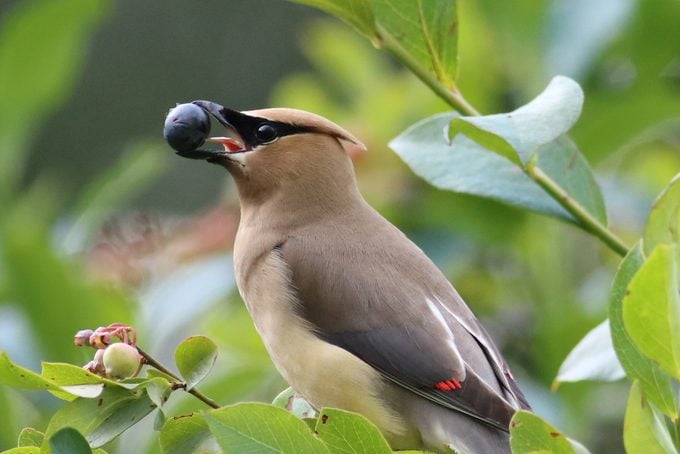
When it comes to appearances, there’s nothing quite like cedar waxwings and bohemian waxwings. They’re mostly covered in sleek brown plumage. But their handsome good looks are in the details—slicked-back head feathers, a black eye mask, waxy red wing tips, and a tail that looks as if it’s been dipped in yellow paint. Spotting just one of these attractive birds is a treat. But they don’t come to bird feeders. So you may be wondering what do cedar waxwings eat and how to attract them.
What Do Cedar Waxwings Eat?
Waxwings are incredibly social birds that forage in flocks year-round. But come fall, you might spot hundreds at a time descending on a single berry-filled tree or shrub. Cedar waxwings love to eat berries and fruit.
Finding them is a bit up to chance. Waxwings are nomadic; where they breed and spend winter varies each year, because they travel to places where fruit is most abundant. A flock could show up almost anywhere in the country throughout the fall and winter months.
Look for these drifters anywhere berry bushes grow—woodlands, farms, orchards, parks or your backyard. Once you spot a flock, watch for peculiar behaviors, like waxwings passing a berry to each other, or a bird plucking fruit and tossing it in the air.
Help waxwings find your yard by planting natives that produce small berries, such as dogwood, serviceberry, cedar, juniper, hawthorn or winterberry.

Less widespread than their cedar waxwing relatives, Bohemian waxwings are found in the far Northwest and in states along the Canada border in winter. There are very subtle differences between the two species. Where the ranges overlap, both species might be spotted in the same group.
Top 10 Plants to Attract Cedar Waxwings
Strawberry
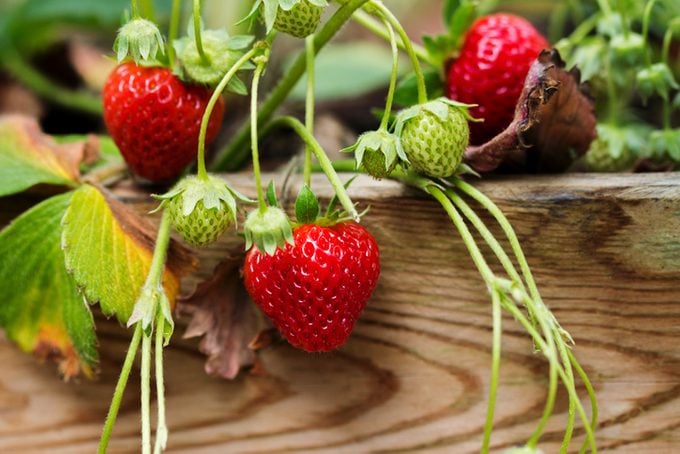
Fragaria, Zones 3 to 10
The flowers attract butterflies while the berries attract waxwings and other fruit-loving birds. Watch for the beautiful red leaves in fall. June-bearing varieties produce one bumper crop per season. If you want several crops, try growing day-neutral or everbearing varieties.
Why we love it: There’s always room for strawberries, since you can grow them in the ground, in hanging baskets or in container gardens.
Winterberry
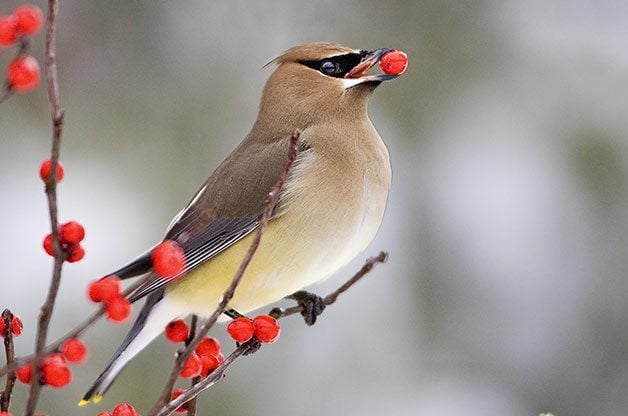
Ilex verticillata, Zones 3 to 9
The red berries of this deciduous holly brighten gray or snowy winter landscapes. Be sure to plant at least one male for every five female plants so there’s fruit for cedar waxwings to eat. Combine winterberry with evergreens and ornamental grasses for a pleasing winter scene. The plant is tolerant of wet acidic soils.
Why we love it: A few berry-covered branches will do wonders for your winter container gardens.
Juniper
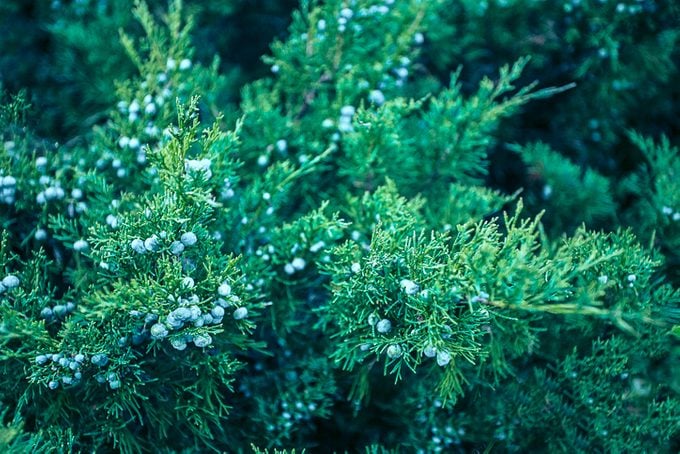
Juniperus, Zones 2 to 9
From tall and slender to low and spreading, juniper comes in a wonderful diversity of shapes. The prickly evergreen needles provide shelter, while the berrylike cones offer food for the birds. Needles can be green or bluish-green and may be tipped in white or yellow. Some turn bronzy-purple for winter, while others remain green to brighten the landscape.
Why we like it: There’s at least one type of juniper that will grow in just about any part of the world.
Serviceberry
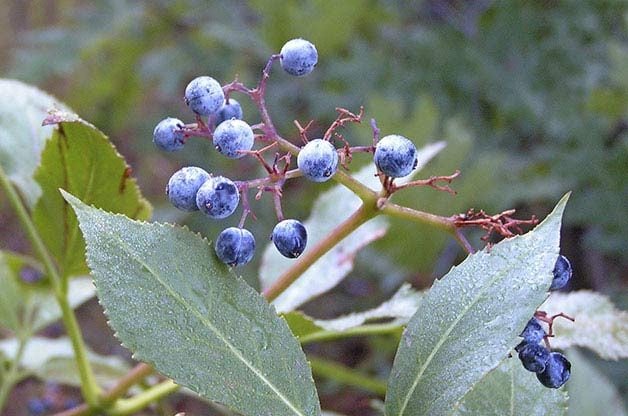
Amelanchier, Zones 3 to 9
Also know as juneberry or shadbush, this four-season beauty provides white flowers in spring, fruit in June and great fall color. When the leaves drop, they reveal beautiful smooth gray bark. Both tree and shrub forms are available in average heights of 3 to 25 feet.
Why we love it: You’re growing this plant as a way to attract waxwings, but you can enjoy this edible fruit, too. It tastes like a nutty blueberry.
Learn all about cedar waxwing baby birds and nests.
Hawthorn
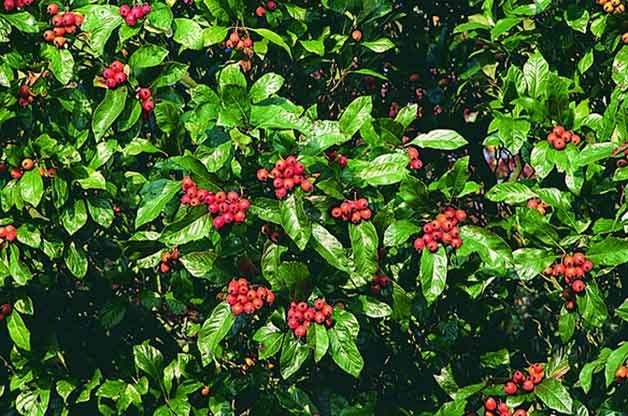
Crataegus, Zones 3 to 8
Include these small-scale plants in mixed borders, mulched beds or near other plantings where their beauty can shine but you’re protected from the thorns. Or select one of the thornless varieties for use near pathways and children’s play areas. Hawthorn’s white flowers are pretty to look at (but not to smell), and its drought tolerance makes it a good addition to water-wise gardens.
Why we love it: The fruit-laden horizontal branches are breathtaking in winter—a pretty way how to attract waxwings.
Crabapple
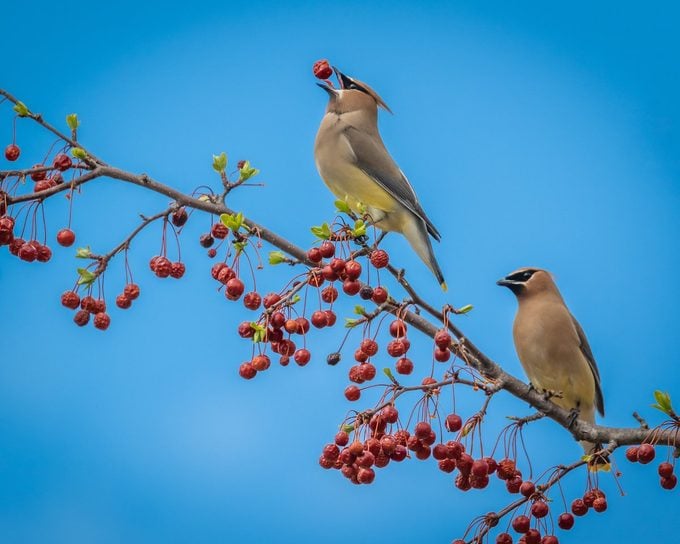
Malus, Zones 3 to 9
Everyone loves crabapple’s lightly fragrant white, pink to rosy-red spring flowers. But if you want to know how to attract waxwings, consider the colorful fruit, too. Look for fire blight- and scab-resistant varieties to increase the beauty and reduce maintenance.
Why we love it: There are so many choices! Upright, weeping and spreading forms are available with yellow, orange or red fruit.
Learn what birds eat oranges from fruit bird feeders.
Madrone
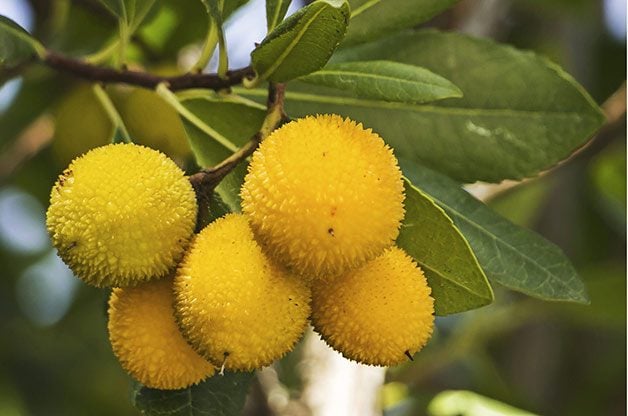
Arbutus menziesii, Zones 7 to 11
You may know this broadleaf evergreen for its elegant form and reddish-brown bark, but the waxwings know madrone for the reddish berries. The dark green leaves make a striking backdrop to the white flowers. Plant it in a mixed border or mulch bed to minimize leaf and blossom cleanup. It prefers warm, dry locations.
Why we love it: Madrone’s berry clusters may include red, orange and yellow fruit at the same time.
Check out the top 10 dwarf fruit trees for small spaces.
Mountain Ash
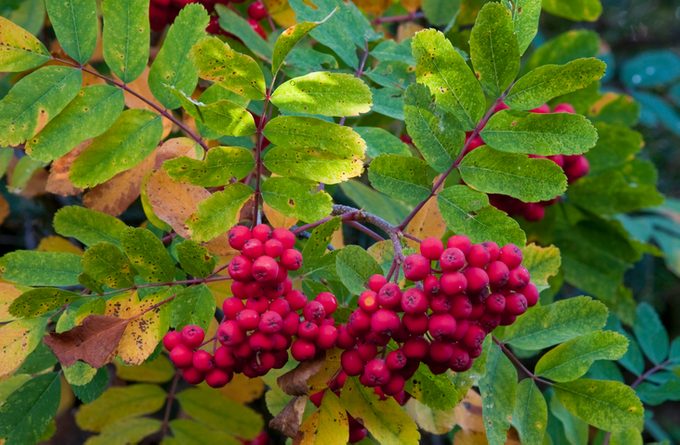
Sorbus, Zones 2 to 6
The North American native and European mountain ashes are small-scale trees that work well in mixed borders and less-than-spacious landscapes. Mulch the soil to keep the roots cool and moist. Proper care is critical to keeping this tree free of pests and looking its best.
Why we love it: Your extra effort in caring for this plant will pay off when a flock of waxwings feasts on the fruit in fall or early winter.
Grow potted flowers and plants that attract hummingbirds.
Elderberry
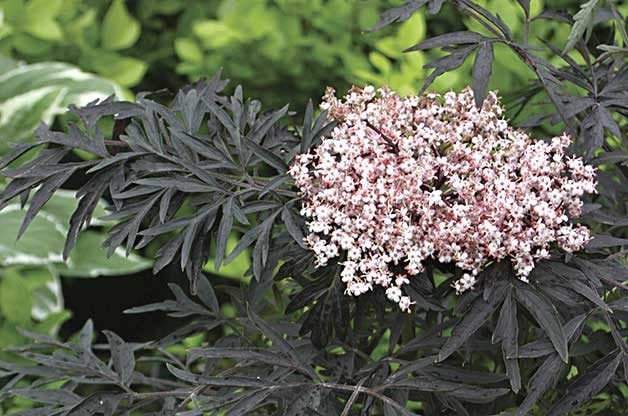
Sambucus, Zones 3 to 9
The fragrant white flowers add a bit of aromatherapy to the garden, while the fruit attracts the birds. Include elderberries in your shrub plantings and perennial gardens, or use this suckering plant to help stabilize slopes and riverbanks. Regular pruning will keep it looking its best.
Why we love it: If you have any berries left after the birds get their fill, you can use them to make your own jam, jelly or wine.
Grow these native ornamental grasses for birds and butterflies.
Raspberry
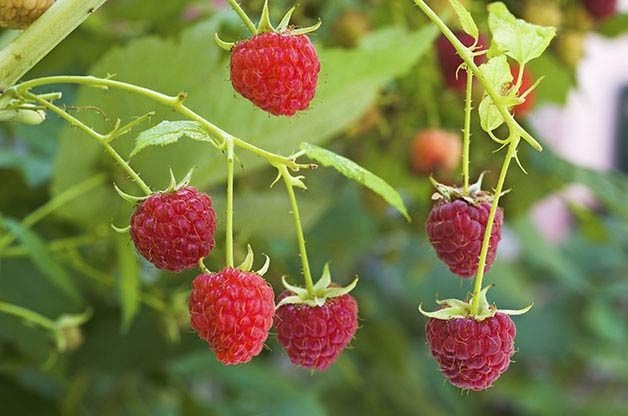
Rubus, Zones 2 to 11
Yes, raspberries are delicious, but share some with the waxwings! These vigorous plants make a great hedge, screen or barrier in the garden. Proper pruning will increase productivity and reduce pest problems.
Why we love it: Summer- and fall-bearing varieties guarantee that you and the birds will have plenty of fruit to enjoy.
Next, learn about birdscaping: Growing plants for nesting birds.




















